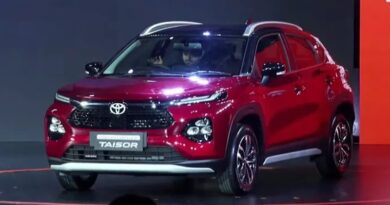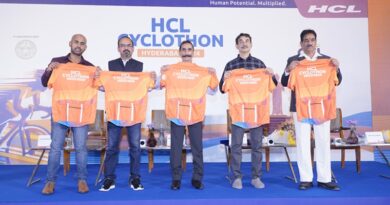Connectivity, peace at India-Myanmar border: What Jaishankar discussed at Mekong Ganga Cooperation meet

Foreign minister S Jaishankar co-chaired 12th meet of Mekong Ganga Cooperation, initiative by 6 nations focusing on cooperation in tourism, culture, education, transport & communications.
New Delhi: External Affairs Minister S. Jaishankar Sunday emphasised the need to speed up connectivity projects across the Bay of Bengal Initiative for Multi-Sectoral Technical and Economic Cooperation (BIMSTEC) region and sought peace along the India-Myanmar border.
During his visit to Bangkok for the 12th meeting of the Mekong Ganga Cooperation (MGC) initiative, Jaishankar in a tweet said that enhancing connectivity among the MGC countries was a priority and urged for the speedy completion of the India-Myanmar-Thailand Trilateral Highway, reportedly delayed due to the crisis in Myanmar.
A 1,400 km project that falls in the BIMSTEC region, this highway would link Moreh in Manipur with Mae Sot in Thailand.
— Dr. S. Jaishankar (@DrSJaishankar) July 16, 2023
The MGC meeting was co-chaired by Jaishankar and the Foreign Minister of Lao People’s Democratic Republic (Lao PDR) Saleumxay Kommasith.
During the meeting, Jaishankar held discussions with U Than Swe, his Myanmar counterpart, and stressed on the importance of expediting the projects that have faced challenges.
Apart from meeting Swe, Jaishankar also met Don Pramudwinai, the deputy Prime Minister and Minister of Foreign Affairs of Thailand.
In his opening remarks, Jaishankar highlighted that “peace and prosperity” in the South East Asian region was pivotal to Prime Minister Modi’s “vision” of security and growth for the nations here under India’s Act East Policy.
Apart from discussions on trade and tourism, he also called for expediting the conclusion of the Motor Vehicles Agreement between India, Myanmar and Thailand to facilitate seamless movement of goods and people across borders.
“The foreign ministers’ meeting can be considered as a strong pillar of the (MGC) framework,” said Sampa Kundu, a consultant at the ASEAN India Centre at the Research and Information System for Developing Countries.
Describing the MGC as one of the oldest cooperation frameworks in this part of the world, she said that the Indian side was aware of the challenges and opportunities in the existing geo-political scenario.
“Therefore, it is of utmost importance that high-level delegations from India and other MGC countries meet regularly to discuss the nuances of partnership,” Kundu told ThePrint.
Speaking on the economic interests of India within the MGC framework, Kundu explained that more research should be conducted in the area of micro, small and medium enterprises (MSMEs) — an “untapped” area of the partnership.
“The other area is tourism. Even though tourism cooperation is already in place, the economic side of it is still at a nascent stage of development,” she added.
The MGC initiative
According to the MGC website, the grouping is an initiative by six countries — India and five ASEAN nations of Cambodia, Lao PDR, Myanmar, Thailand and Vietnam — that focuses on cooperation in tourism, culture, education, transport and communications.
The MGC grouping was originally called the Ganga Suvarnabhumi Programme (GMSP) and was launched in November 2000 at Vientiane, Lao PDR, the website added.
According to the Vientiane Declaration on 10 November, 2000, the MGC grouping is “determined” to promote the “common heritage” of the region through greater cooperation. The meetings are co-chaired every year by India and one of the five other countries.
The Mekong River is a trans-boundary river that flows from the Tibetan Plateau through southwest China, Myanmar, Thailand, Cambodia, Laos and southern Vietnam to the South China Sea.
‘Our commitment extends beyond talks’
In his opening remarks, Jaishankar also reportedly said “we represent the ancient river civilisations of this continent” and discussed various aspects of cooperation in culture, tourism, transport, communications and economy.
After the meeting, Jaishankar in a tweet highlighted the nature of discussions held, including expediting the conclusion of the motor vehicles agreement between India, Myanmar and Thailand; taking forward culture and tourism cooperation; and deepening the current museum-based cooperation.
He also announced that the MGC has established a “business council to take forward economic cooperation” and highlighted flagship projects like MGC scholarships, the Centre for Excellence in Software Development training and the MGC traditional textile museum.
“Our commitment extends beyond talks. It is grounded in action,” Jaishankar added.
He also said that the MGC was exploring new areas of development partnerships, including through “Quick Impact Projects.” He added that the MGC will expand the ambit of exchanges in agriculture, science and technology and water resource management.
Announced in 2012 by the Government of India, ‘Quick Impact Projects’ cost no more than $50,000 per project and focus on short gestation, high-visibility tasks, such as upgrading physical infrastructure — roads, local community centres, etc — with results that are immediate and visible, according to the MGC website.
Explaining the importance of high-level delegation meetings, Kundu said it becomes more important in the geo-strategic considerations relating to the Indo-Pacific.
“For instance, if the trilateral highway can be expanded to Cambodia, Laos and Vietnam, it will not only extend India’s connectivity to Southeast Asia but also create additional avenues for Indian influence in the region in a positive way,” she added.
On Quick Impact Projects, Kundu explained that it gives India the opportunity to create a positive impact on the communities in the countries involved. “In addition, India regularly provides or arranges capacity-building training programmes for the rest of the MGC countries. These are soft and smart ways to contribute to Act East Policy,” she added.






Pingback: ปั้มไลค์
Pingback: slot88
Pingback: amandaghost.com
Pingback: เช่าเครื่องสเลอปี้
Pingback: slot altogel
Pingback: เกมสล็อตยอดนิยมจากค่าย Simpleplay Games
Pingback: hit789
Pingback: faw99
Pingback: ลงประกาศขายคอนโดฟรี
Pingback: ppf folie
Pingback: chat rooms
Pingback: สูตรหวยไทย 1 นาที มีแบบไหนน่าสนใจบ้าง?
Pingback: cat888
Pingback: best gym equipment shop online
Pingback: ข้อดีและข้อเสียของการเล่นบนเว็บ หวย 2525
Pingback: lg96
Pingback: ระบบสมาชิก
Pingback: สูตรสล็อตทดลองเล่นฟรี ทางเลือกเดิมพันดีที่สุด
Pingback: เว็บพนันบอลถูกกฎหมาย
Pingback: تعرفه تماس بین المللی
Pingback: สรุปแล้ว เว็บสล็อตที่คนไทยเล่น อันดับ 1
Pingback: ยาตราใบห่อ
Pingback: หวยเว็บนาคา แทงง่าย ปลอดภัย
Pingback: หวยยอดนิยมใน เว็บหวยออนไลน์ บาทละ 1000
Great write-up, I am normal visitor of one’s website, maintain up the nice operate, and It’s going to be a regular visitor for a lengthy time.
Pingback: นำเข้าสินค้าจากจีน